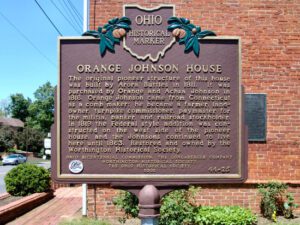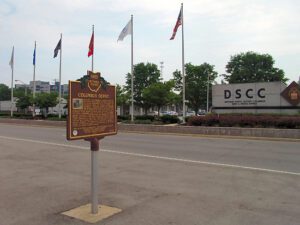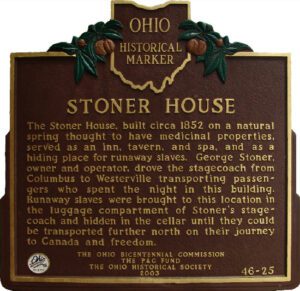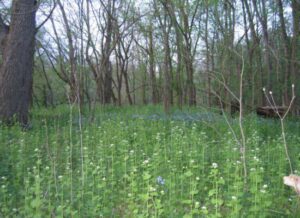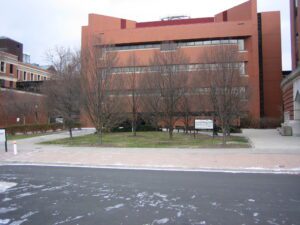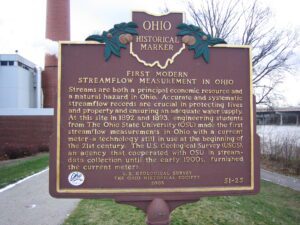, OH
The original pioneer structure of this house was built by Arora Buttles in 1811. It was purchased by Orange and Achsa Johnson in 1816. Orange Johnson came from Connecticut as a comb maker; he became a farmer, landowner, turnpike commissioner, paymaster for the militia, banker, and railroad stockholder. In 1819 the Federal style addition was constructed on the west side of the pioneer house, and the Johnsons continued to live here until 1863. Restored and owned by the Worthington Historical Society.
, OH
Since 1918, this installation, currently known as the Defense Supply Center, Columbus, has served the federal government as a procurement and distribution point for military supplies and equipment. Originally named the Columbus Quartermaster Reserve Depot, this location was chosen because of its immediate access to three railroad lines. Expansion of the center continued after World War I, and in the years immediately prior to World War II, the center’s mission changed to reconditioning war material for resale. During World War II, the center became the largest military supply installation in the world, employing more than 10,000 civilians and holding over 400 Axis prisoners of war in secured barracks. The installation continues to provide a variety of parts and supplies to all branches of the Armed Forces and other Federal agencies.
, OH
The Stoner House, built circa 1852 on a natural spring thought to have medicinal properties, served as an inn, tavern, and spa, and as a hiding place for runaway slaves. George Stoner, owner and operator, drove the stagecoach from Columbus to Westerville transporting passengers who spent the night in this building. Runaway slaves were brought to this location in the luggage compartment of Stoner’s stagecoach and hidden in the cellar until they could be transported further north on their journey to Canada and freedom.
, OH
Recognized for their biodiversity and high quality aquatic habitat, Big Darby Creek and Little Darby Creek were designated as state and national scenic rivers. These riparian ecosystems provide modern recreational opportunities while allowing a sense of their appearance centuries ago. Nearby Indian mounds indicate that the Darby creeks have been important food and transportation resources for thousands of years. More than 100 species of fish and 40 species of freshwater mollusks have been recorded within these watersheds. Several, including the indigenous Scioto Madtom, are locally and federally endangered.
, OH
Roy J. Plunkett was born in New Carlisle, Ohio, and graduated from Newton Township High School in Pleasant Hill. He received his B.A. degree from Manchester College before enrolling as a graduate student in chemistry at The Ohio State University, receiving his Ph.D. in 1936 under the direction of William Lloyd Evans in the McPherson Chemical Laboratory. On April 6, 1938, while employed by the Du Pont Company to develop a nontoxic refrigerant, Plunkett discovered Teflon®, one of the most important polymers of the 20th century. On that day, Dr. Plunkett opened a tank of gaseous tetrafluoroethylene only to find that the gas was gone–its molecules had combined with another (“polymerized”) to form a solid material. Teflon has been used on cookware, the outer skin of space suits, nose cones of space vehicles, bone replacement, and much more.
, OH
In 1937, Anne O’Hare McCormick became the first woman to win the Pulitzer Prize for foreign correspondence. She was born in Yorkshire, England and moved to Ohio as a child. She was educated at the Academy of St. Mary of the Springs. As a freelance writer, McCormick contributed to the Atlantic Monthly, the New York Times, and others. She became a regular correspondent for the Times in 1922 and was the first woman to join its editorial board in 1936. As a Times correspondent in Europe during the tumultuous years before and during World War II, she conducted interviews with leaders including Benito Mussolini, Adolf Hitler, Neville Chamberlain, Winston Churchill, and Josef Stalin.
, OH
Monsignor John Joseph Jessing, founder of the Pontifical College Josephinum, was born in Germany in 1836. He immigrated to America and, in 1870, was ordained a priest in Columbus. He published a newspaper, the Ohio Waisenfreund (Ohio Orphans’ Friend), raising funds to establish a boys’ orphanage in Pomeroy, Ohio, in 1875. The orphanage was transferred to Columbus two years later, and in 1888, he opened the Collegium Josephinum, a seminary for boys with the “desire, intention, and talent to study for priesthood.” Pope Leo XIII conferred the title “pontifical” in 1892, and the institution was incorporated by the State of Ohio in 1894. Monsignor Jessing died in 1899, but his vision lives on at the Pontifical College Josephinum, the only pontifical seminary outside of Italy. Monsignor Jessing’s motto, “If God is for us, who can be against us?” became the official motto of the Pontifical College Josephinum.
, OH
Streams are both a principal economic resource and a natural hazard in Ohio. Accurate and systematic streamflow records are crucial in protecting lives and property and ensuring an adequate water supply. At this site in 1892 and 1893, engineering students from The Ohio State University (OSU) made the first streamflow measurements in Ohio with a current meter – a technology still in use at the beginning of the 21st century. The U.S. Geological Survey (USGS), an agency that cooperated with OSU in stream-data collection until the early 1900s, furnished the current meters.


